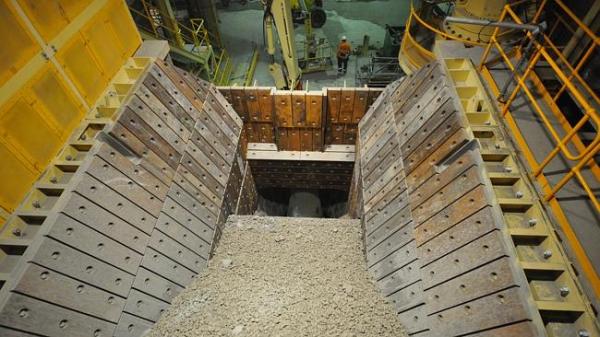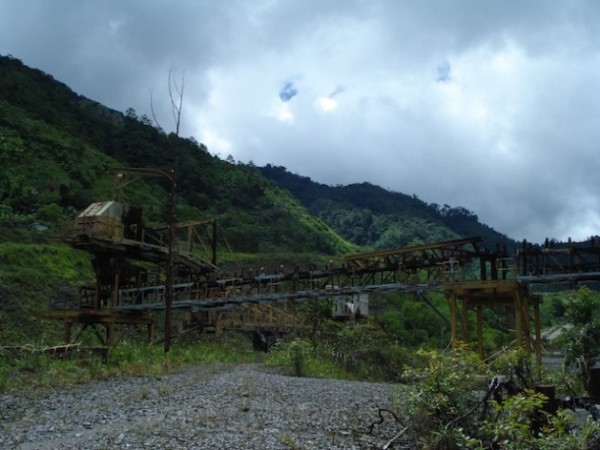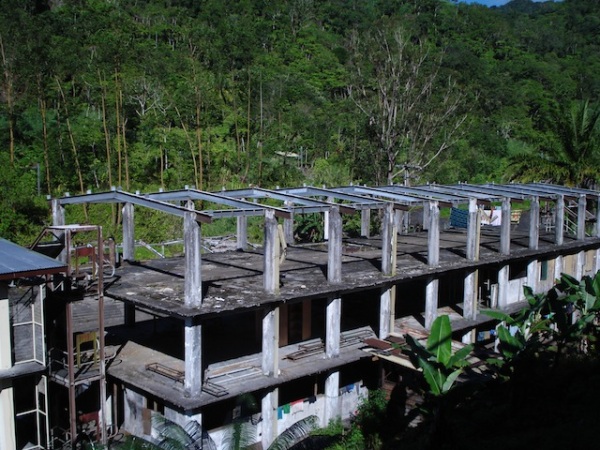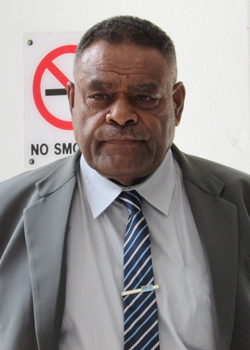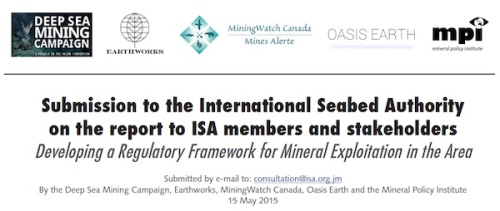So if the big mining companies control the Australian government who do we imagine is in charge in PNG?
Sort of explains all these dumb ass ideas like experimental seabed mining, marine waste dumping and re-opening Panguna…
BHP and Rio Tinto dictate terms to the Abbott governent
Twiggy Forrest’s failed bid to reset the iron ore price inadvertently shows who really tells the Abbott government what to do.
Mike Seccombe | The Saturday Paper

Fortescue Metals Group CEO Andrew Forrest. AAP
It was a typical interview by the king of right-wing radio, Alan Jones, last Friday.
The host talked more than the guest. A long diatribe of introduction was followed by leading questions. All the prime minister was required to do was agree. And Tony Abbott duly did just that.
Jones’s bugbear du jour was the way two giant mining companies, Rio Tinto and BHP, were flooding the world market with iron ore and forcing down prices.
Jones was gunning for the big companies. He accused them of being unconcerned about the collateral damage they were doing to the Australian economy by their continued expansion of production.
“Now, as prices are forced down, the cost to the economy – all of us, the people listening to you now – are mammoth,” he raved. “In the month of March, the price fell 17 per cent, $8 billion ripped out of the economy. Isn’t there a point at which government has to intervene here and say to these people it’s not your iron ore, you were given a licence to sell this at the maximum price?”
Jones didn’t give Abbott a chance to answer. Instead, he went on to endorse a proposal by independent senator Nick Xenophon to hold an inquiry into the behaviour of the big miners.
Finally, the question: “
What’s your view about all of this?”
“Well,” said Abbott, “I think we do need an inquiry, Alan.”
“Other countries must be wondering why Australia would sabotage our own revenue like this.”
The prime minister went on to say he was not in the business of “demonising” big corporate taxpayers.
“But certainly, I think we do need to know the facts of what’s going on here,” he said, “because I am conscious of the claims that are being made by Andrew Forrest and others.”
Andrew “Twiggy” Forrest, the billionaire boss of the mid-sized iron ore miner Fortescue Metals, suggests the two giants have acted deliberately to force smaller, higher-cost producers out of the business. He wants the price reset.
Abbott appeared to give credence to the complaint, telling Jones:
“…what we don’t want to see is predator behaviour by any companies. We don’t want to see irrational behaviour by any businesses, particularly when predator behaviour, when irrational behaviour, may well have a dramatic impact on the economy.”
Abbott backtracks
It was strong stuff, and the clear message was that Alan Jones, Nick Xenophon and Twiggy Forrest would get their wish.
In fact, the government was already laying the groundwork for an inquiry. Treasurer Joe Hockey had met with Xenophon to negotiate terms.
Over the weekend, a chorus of representatives from the iron ore “juniors”, as they call the smaller players, including Tony Kiernan, chairman of BC Iron, Lourenco Goncalves, chairman and CEO of Cliffs Natural Resources, and David Flanagan, chairman of Atlas Iron, joined Forrest in singing the praises of the government for “announcing” it.
Then things began to change. By the start of this week, Abbott was no longer talking about predatory or irrational behaviour on the part of the mining giants. Now he said that while an inquiry might be useful, “it can’t be a witch-hunt, it can’t be directed against any particular company or companies”.
“One thing you will never find from this government is any attempt to regulate a market which is working well,” he said on Monday.
By Tuesday he had retreated further.
“Obviously, we believe in the free market and we certainly haven’t made any decision to have an inquiry,” Abbott said.
“This is something that Nick Xenophon was talking about last week,” he said, as though it had never been more than a thought bubble from the independent senator, notwithstanding the fact that he, Hockey, Finance Minister Mathias Cormann and others had been talking it up just days previously.
Late on Thursday, the Treasurer’s office issued a brief statement:
“Over recent days, there has been some speculation about whether a parliamentary inquiry into the iron ore sector was necessary. After discussing the issue with regulatory bodies and stakeholders across the resources sector, the government will not be initiating an inquiry at this time.”
The Abbott government’s about-face provides a wonderful case study of the conflict between political principle and political expediency, corporate power and corporate responsibility, and the way the public interest can become collateral damage in that conflict.
Iron ore price collapse
At the root of the problem is the fact the decade-long boom in resource prices encouraged vast expansion of mining activity. When iron ore prices were above $US180 a tonne, as they were in early 2011, even high-cost producers made lots of money. Low-cost producers such as BHP and Rio made a motza.
At $100 a tonne, where the iron price was a year ago, there was still plenty of money to go around. And just seven months ago, when the price was a little under $70, Fortescue’s chief executive Nev Power told the company’s annual general meeting he was “not at all concerned” by the price decline.
Fortescue had cut its production costs to $45 a tonne, plus “about $3 a tonne of interest and $3 or $4 a tonne for sustaining capital”.
As Power boasted then:
“That gives us a very strong margin at today’s prices.”
But prices kept sliding. On April 5 they bottomed at $46.70, well below Fortescue’s cost of production.
To add to the company’s problems, it owed some $9 billion to those who had financed its expansion in the boom. The first tranche of that debt was due to be repaid in just two years. To give itself some more breathing space, it attempted in March to refinance. And failed.
The company tried again in late April, after a small bounce in the ore price, and finally succeeded in getting $2.3 billion, which will give it a couple more years to turn things around.
The cost was high. In a world where interest rates are otherwise so low as to amount to free money, Fortescue will pay about 10 per cent interest. That’s desperate. Bear in mind Fortescue is a big player, compared with anyone but the giant multinationals such as BHP, Rio and Brazil’s Vale. Other juniors are in even worse predicaments. In early April, Atlas Iron simply shut down production.
At this week’s prices of a little under $60 a tonne, Fortescue is barely profitable, but things are likely to get worse.
Both Rio and BHP reckon they can get their costs down to little more than $20 a tonne, and have plans to further expand production. Gina Rinehart’s Roy Hill mine is scheduled to begin production later this year. Next year Vale’s monster Serra Sul mine in Brazil will further add to oversupply. In total, a couple of hundred million more tonnes of low-cost iron ore will come onto a flooded market over the next year or so. Australia’s capacity to control the price might be a moot point.
Unsurprisingly, lots of analysts predict the iron ore price will fall further, to $45 or even $35 a tonne. This paints a grim picture not just for Twiggy Forrest and the other smaller producers, but for the entire Australian economy.
Reduced prices mean reduced royalties to the states. As University of Queensland economics professor Flavio Menezes points out, the sharp decline not only in iron ore but also oil prices has seen Western Australia’s revenue forecasts to 2017-2018 revised down by an unprecedented $10.2 billion since the 2014-15 budget. The state is on the cusp of recession. And lower profits for the mining companies mean lower corporate tax payments to the commonwealth.
“This has contributed to lower nominal GDP and has reduced forecast tax collections by around $A20 billion,” says Menezes. “This is roughly 57 per cent of the public deficit in 2015-2016.”
This is not the way it was supposed to be. Our leaders and their forecasters told us that even though the investment phase of the mining boom was over, money would continue to pour into the country as a result of increased export volumes.
Yet even as exports went through the roof, revenue fell. Last year the value of Australia’s iron ore exports went down by more than a billion dollars, although the amount we shipped went up by 23.5 per cent.
As a result of their huge increases in production, the big mining companies are screwing us all. Even screwing themselves, at least in the short term.
Menezes – who, it must be said, is very much onside with the mining juniors – compares the situation with the United States airfare wars that broke out after deregulation in the early 1990s. So vigorous was the price-cutting that the industry lost some $13 billion over three years and almost went collectively broke.
Cartel behaviour
So why is this happening?
There are two competing explanations. The first is that the big miners are behaving as a cartel, driving down prices to squeeze out the competition, after which prices can go up again, bringing them ever bigger profits.
The obvious comparison is with OPEC, which has lately been doing exactly that with oil. As the progressive think tank The Australia Institute points out, Australia is the OPEC of iron ore. Since 2006, our share of the international iron ore trade has doubled to 59 per cent, which is actually larger than OPEC’s 53 per cent of global oil trade
“Additionally,” the institute notes, “production data reveals that Australia accounted for 95 per cent of growth in world iron ore production…
“You only get to dig up and sell natural resources once. Other countries must be wondering why Australia would sabotage our own revenue like this.”
Australia’s iron ore resources are finite and they belong to the people of Australia. So why, as the institute’s Richard Denniss asks, would our politicians “have us believe that doubling our exports and pushing the price down is the smart way to go?”
In March, Andrew Forrest offered to join BHP and Rio in capping production, on the basis that this would push prices back up. He was subsequently investigated by the Australian Competition and Consumer Commission for advocating anti-competitive behaviour.
The ACCC concluded he had broken no law, just as it has concluded the big miners have not done anything wrong in screwing their competitors. So long as they sell above their costs of production, they are not deemed to be engaging in anything predatory.
In summary, even if it is a conspiracy, there is nothing illegal about it.
Poor forecasting
The second explanation for the shambolic state of the iron industry is that it is simply the result of a massive forecasting error.
As the old saying goes, given the choice between conspiracy and foul-up, always choose the foul-up, as the majority of observers have in this case.
The mining industry convinced itself that Chinese demand for steel would continue to grow strong and uninterrupted for at least another decade or so. And it hasn’t.
In a recent piece tracing the genesis of this mistaken belief, The Australian Financial Review’s Angus Grigg and Lisa Murray went back to a 2007 report by the consulting firm McKinsey, which confidently declared China’s steel production would grow to a peak of a billion tonnes a year between 2025 and 2030. That is, 60 per cent above its actual production in 2010.
As they recount, this implausibly optimistic forecast became the basis of industry planning and thus Australia wound up selling its irreplaceable mineral resources for not very much.
Was it a conspiracy or foul-up? It would be very interesting were a parliamentary inquiry to explore the question. It would also bear exploring the extent to which government infrastructure subsidies contributed to the market advantage the big miners have over their smaller competitors. And a host of other questions.
Of course, the big miners don’t want such issues explored. The chiefs of Rio and BHP have made that abundantly clear in public statements over recent days. No doubt they have made it even more clear privately, via their army of lobbyists.
They say the mere fact of an inquiry would damage Australia’s reputation with our trading partners and raise fears of sovereign risk. Nick Xenophon calls the claims “hysterical”.
But our major parties know the cost of getting the big miners offside. Labor’s neutered attempt to tax their super profits in 2010 proved this.
This time, Labor is playing it smart and expedient. Opposition Leader Bill Shorten, no doubt influenced by his shadow minister for resources and former mining industry lobbyist Gary Gray, is now firmly against an inquiry.
Bottom line, the chances of it happening are about zero and we’ll get no answers to the multibillion-dollar questions.
But one lesser question has been answered. We now know there are people Tony Abbott is even more eager to please than Alan Jones.


